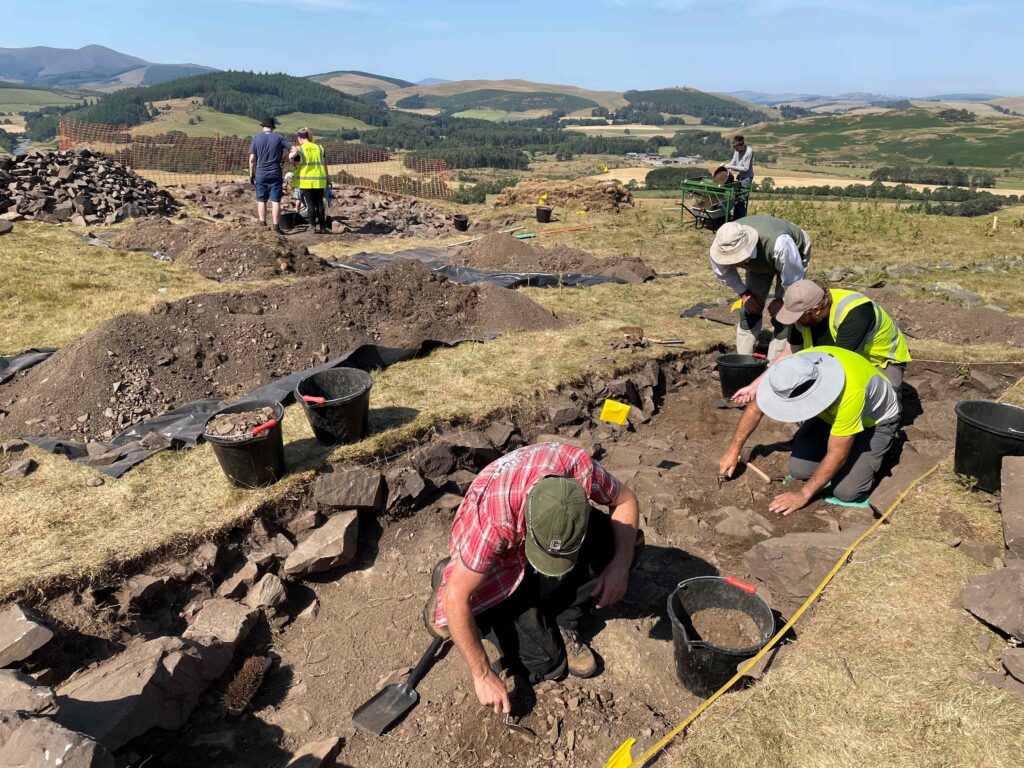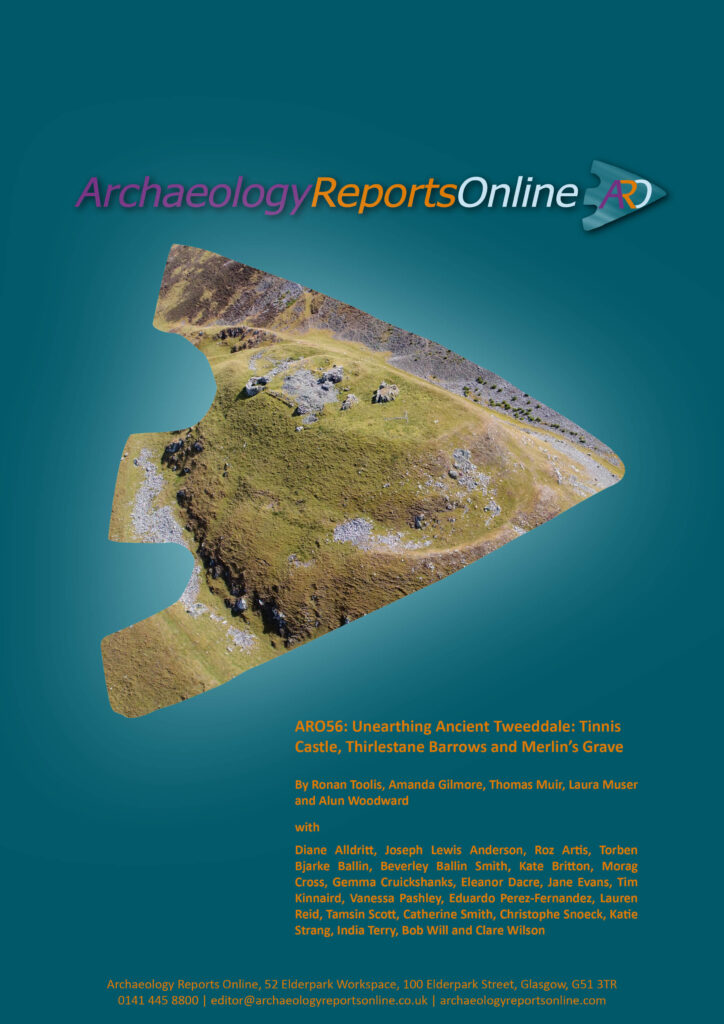Drumelzier has long been associated with the legendary Merlin, who was reputedly imprisoned there by a Dark Age King, killed and buried by the banks of the Tweed nearby too. At least according to the Vita Merlini Sylvestris – the Life of Merlin of the Forest – a medieval tale probably written in Glasgow during the twelfth century.

In 2022, a team of volunteers led by GUARD Archaeology set out to investigate the archaeological roots of this local legend. The results of their work have just been published and reveals the startling survival of the early medieval cultural heritage of the Britons of southern Scotland.
A geophysics survey revealed that there is an archaeological feature resembling a grave near to the reputed location of Merlin’s Grave at Drumelzier.

Excavation of Tinnis Fort, which overlooks Merlin’s Grave, found that this prominent hillfort was occupied around the late sixth and early seventh centuries AD when the story was set and that it has the hallmarks of a lordly stronghold of the time.

And excavation of the Thirlestane Barrows across the other side of the Tweed discovered that sometime between the late-third and late-sixth centuries AD a square barrow was added to a much earlier group of Bronze Age Round Barrows, within which two individuals of exceptional elite status were buried.
What the findings reveal is not that the local story was true, but that the Drumelzier legend, which contains pre-Christian customs and ancient Cumbric names, was associated with local sites where archaeology now shows could credibly have given rise to the story. The legend was not brought here as a wandering medieval tale but more likely originated in Drumelzier itself, perhaps originating as a folk memory, embellished over the centuries before it spread far and wide and changed out of almost all recognition.
Nor, given the archaeology encountered from the Late Mesolithic/Early Neolithic, Bronze Age, Iron Age and medieval periods, was this the only trace of local stories that the Drumelzier’s Hidden Heritage project discovered.
A scatter of Late Mesolithic / Early Neolithic flint blade fragments was recovered from the summit of Tinnis, the barest traces of some of the earliest groups of people to ever climb this prominent hill and from its vantage point gaze across a Tweed Valley that looked very much different from the present.

The vitrified ramparts at Tinnis attest to the fall of a Late Iron Age hillfort, the forgotten victims of a forgotten conflict when prominent households vied for power and the foundations for petty kingdoms were being laid.
And in the fourteenth century, a castle was built at Tinnis by the fearsome Tweedies of Drumelzier, who held this castle for the Kings of Scotland from about 1366 until about 1525, a bulwark against English raids from the south.

Whether it was folk memory or stories that clung to the group of Bronze Age round barrows at Thirlestane, these monuments evidently had some meaning in the landscape for the square barrow to be sited so close after an intervening two millennia. The people of ancient Tweeddale were aware of the history beneath their feet and the people that came before and it was through local folklore that stories about their past were passed on.
The Drumelzier’s Hidden Heritage project was a collaboration between the Arthur Trail Association, local heritage groups, volunteers, Magnitude Surveys and GUARD Archaeology Ltd, funded by SSE Renewables Clyde Borders Community Fund, Fallago Environment Fund, Society of Antiquaries of Scotland Dr Euan MacKie Legacy Fund, Glenkerie Community Fund, the National Lottery Heritage Fund, the Hunter Archaeological and Historical Trust, and the Strathmartine Trust

ARO56: Unearthing Ancient Tweeddale: Tinnis Castle, Thirlestane Barrows and Merlin’s Grave by Ronan Toolis, Amanda Gilmore, Thomas Muir, Laura Muser and Alun Woodward is freely available to download from Archaeology Reports Online.
The exhibition Unearthing Ancient Tweeddale at Peebles Museum will run from Saturday 8 June – Saturday 27 July 2024 (closed Wednesdays and Sundays). The exhibition will then be going on tour to Broughton, Drumelzier, Stobo, Traquair House, Eddleston, Moffat, Tweedsmuir, Kirkton Manor and Biggar over the course of August-October 2024.

